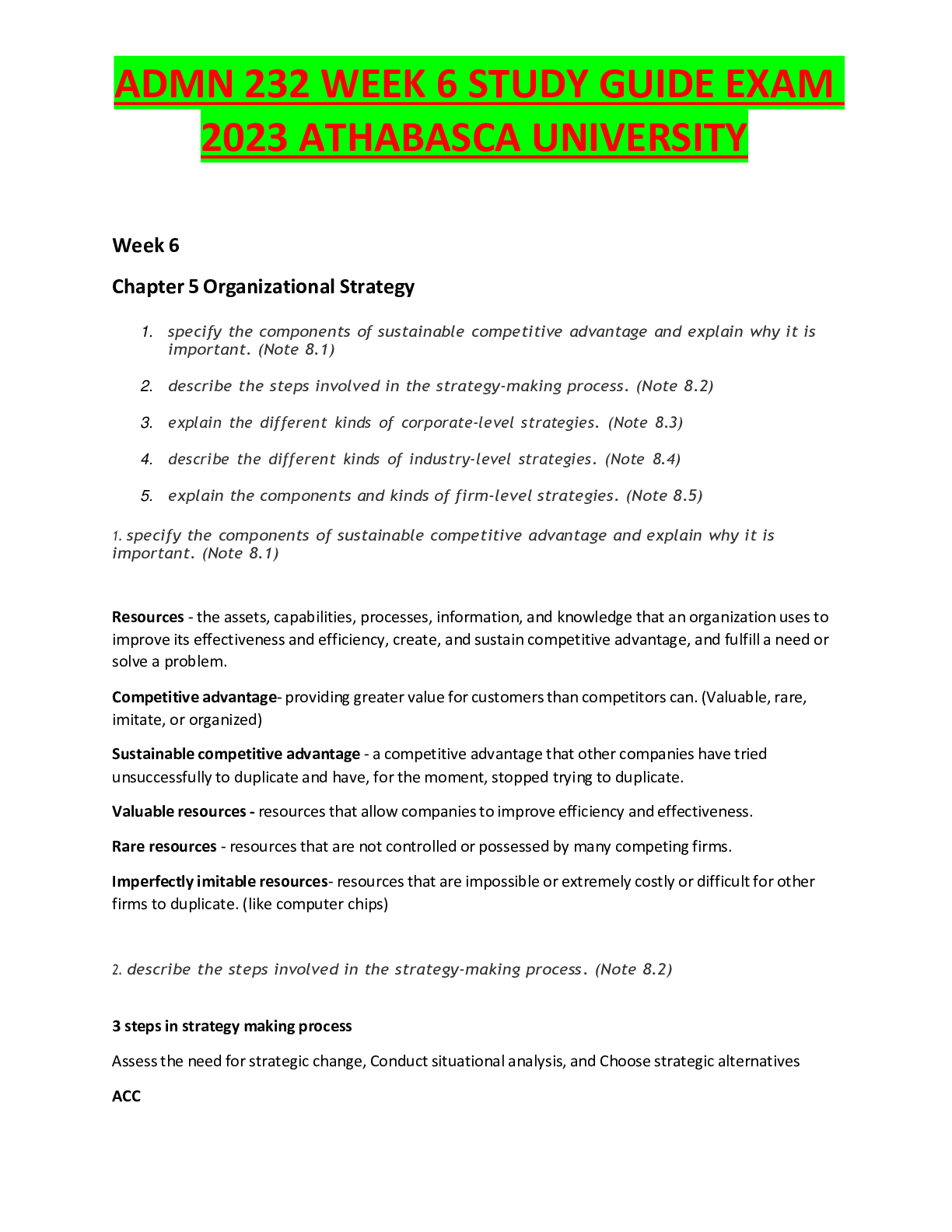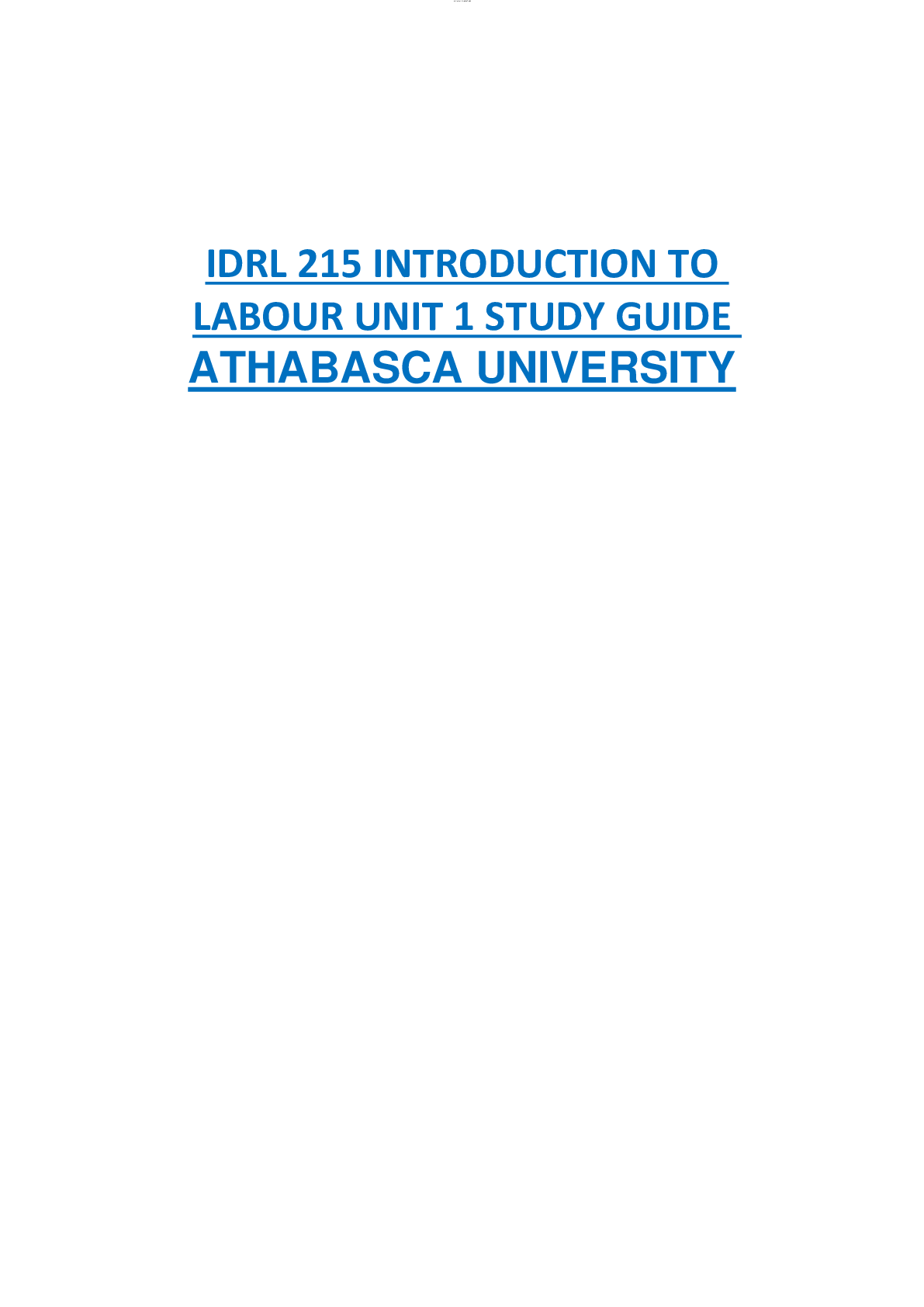Biology > STUDY GUIDE > Bio325 - midterm notes Bio325 - midterm notes Athabasca University (All)
Bio325 - midterm notes Bio325 - midterm notes Athabasca University
Document Content and Description Below
BIO 325 – MIDTERM 1 NOTES CHAPTER 1 Chapter 1 An Introduction to the Human Body Objectives After completing this chapter, you should be able to 1.define the terms anatomy and physiology. 2.de... fine the following levels of structural organization: chemical, cellular, tissue, organ, system and organism. 3.identify the 11 systems of the human body, list representative organs of each system, and describe the major functions of each system. 4.identify the basic life processes of the human body. 5.define the term homeostasis, and explain the effects of stress on homeostasis. 6.describe the components of a feedback system. 7.compare the operation of negative and positive feedback systems. 8.explain the relationship between homeostasis and disease. 9.describe the anatomical position, and compare common and anatomical terms used to describe various regions of the human body. 10.define the terms describing directions and anatomical planes used in association with the human body. 11.list, by name and location, the principal body cavities and the organs contained within them. Keywords and Topics Make certain that you can define, and use in context, each of the terms listed below, and that you understand the significance of each of the concepts. 1.Define the terms anatomy and physiology. A.Anatomy – the science of the body structures and the relationships among them (ana = up, tomy = cutting) B.Dissection –the careful cutting apart of body structures to study their relationships (dis=apart, section=act of cutting) C.Physiology – the science of body functions – how the body works (physio = nature, logy = study of) 2.Define the following levels of structural organization: chemical, cellular, tissue, organ, system, and organism. A.chemical level I. atom – smallest unit of matter that participate in chemical reactions II. molecule – two or more atoms joined together B.cellular level I. cell – molecules form cells which are the basic structural and functional units of an organism that are composed of chemicals C.tissue level I. tissue – are groups of cells and the materials surrounding them that work together to perform a particular function D.organ level I. organ –composed of two or more tissues, they have specific functions and recognizable shapes E.system level Downloaded by Ian Mbogo (ianshirow834@gmail.com) lOMoARcPSD|7822105 I. system – consists of related organs with a common function F.organismal level I. organism—all the parts of the human body functioning together Chemical level (letter)—includes atoms and molecules (two atoms joined together) examples are C, H, O, N, Ca, S, molecules are DNA or glucose Cellular level (word)—molecules combine to form cells (smallest living unit of the human body) examples are muscle cells, nerve cells, epithelial cells Tissue level (sentence)—are groups of cells and the material around them that work together to perform a particular function. Examples are epithelial tissue (covers body surfaces, lines hollow organs and cavities and forms glands), connective tissue (connects, supports, and protects body organs while distributing blood vessels to other tissues), muscle tissue (contracts to make body parts move and generates heat), and nervous tissue (carries information from one part of the body to another through nerve impulses) Organ level (paragraphs)—different types of tissues are joined together (organs are structures composed of two or more types of tissues, they have specific functions and recognizable shapes). System level (chapters)—consists of related organs with a common function. Sometimes an organ can be part of more than one system (ex: pancreas is a part of the digestive system and the endocrine system) Organismal level (book)—all the parts of the human body functioning together. 3.Identify the 11 systems of the human body, list representative organs of each system, and describe the major functions of each system. A.systems: integumentary—components are skin, hair, nails, sweat and oil glands. Function is protecting body, help regulate temperature, eliminates some waste, helps make vit d, detects sensations such as pain, touch, warmth and cold, stores fat and provides insulation skeletal—components are bones and joints and cartilages. Function is to support and protect body, provides surface area for muscles to attach, aids body movements, houses cells that produce blood cells, stores minerals and lipids. Muscular—components are skeletal muscle tissue (usually attached to bones). Function is body movements (ex walking), maintains posture and produces heat Nervous—components are the brain spinal cord, nerves and special sense organs like eyes and ears. Function is to generate action potentials to regulate body activates, detect changes in body’s internal and external environments, interprets changes and responds by causing muscular contractions or glandular secretions. Endocrine—components are hormone producing glands (ex pineal gland, hypothalamus, thyroid gland, pituitary gland, thymus, parathyroid gland, adrenal glands, pancreas, ovaries and testes, as well as hormone-producing cells in several other organs. Functions are to regulate body activities by releasing hormones (chemical messengers transported in blood from endocrine glad or tissue to target organ. Cardiovascular—components are blood, heart, and blood vessels. Function that heart pumps blood through vessels, blood carries O2 and nutrients to cells and CO2 and wastes away from cells and helps regulate acid-base balance, temperature, and water content of body fluids, blood components help defend against disease and repair damaged blood vessels. Downloaded by Ian Mbogo (ia [Show More]
Last updated: 2 years ago
Preview 1 out of 57 pages

Buy this document to get the full access instantly
Instant Download Access after purchase
Buy NowInstant download
We Accept:

Reviews( 0 )
$8.50
Can't find what you want? Try our AI powered Search
Document information
Connected school, study & course
About the document
Uploaded On
Aug 12, 2021
Number of pages
57
Written in
Additional information
This document has been written for:
Uploaded
Aug 12, 2021
Downloads
0
Views
84




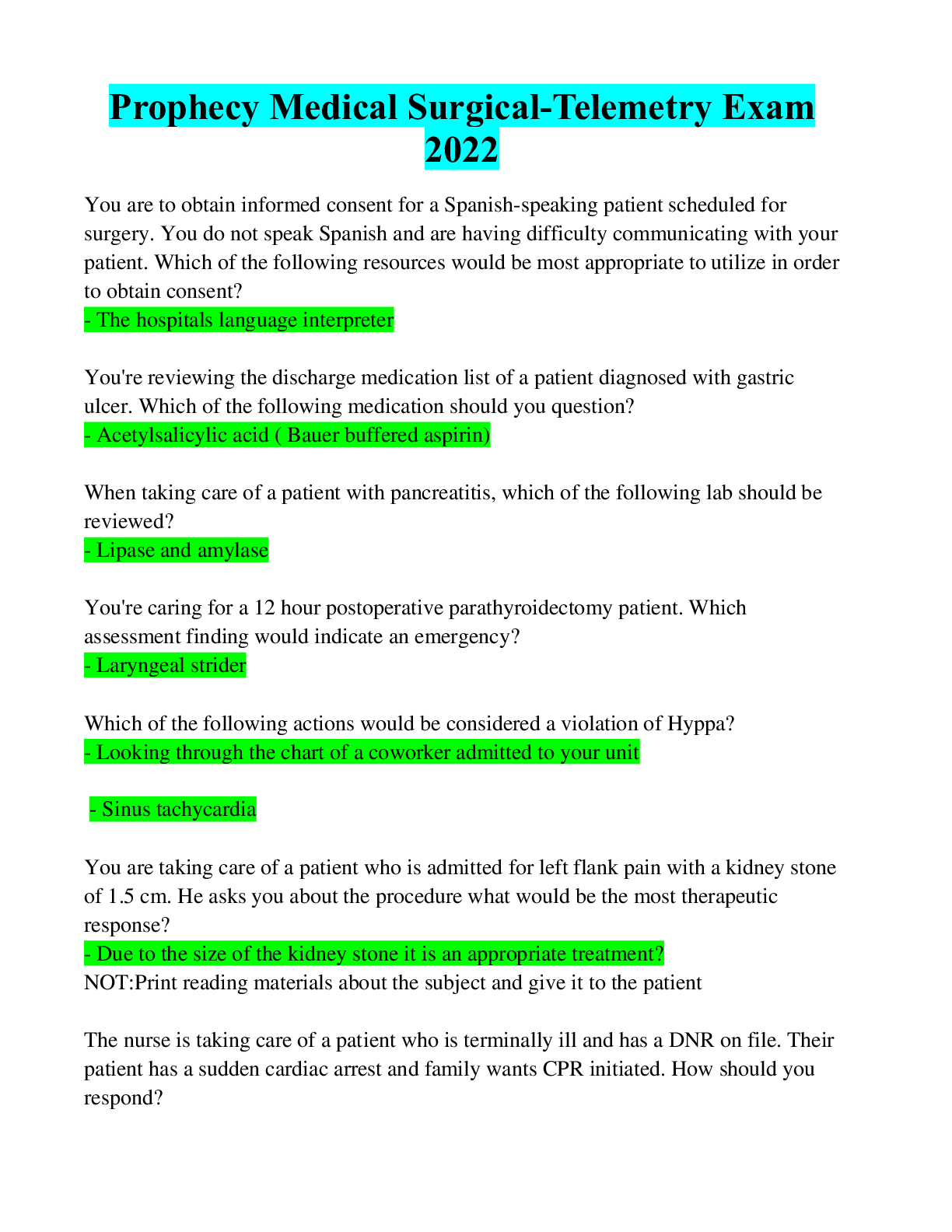
.png)


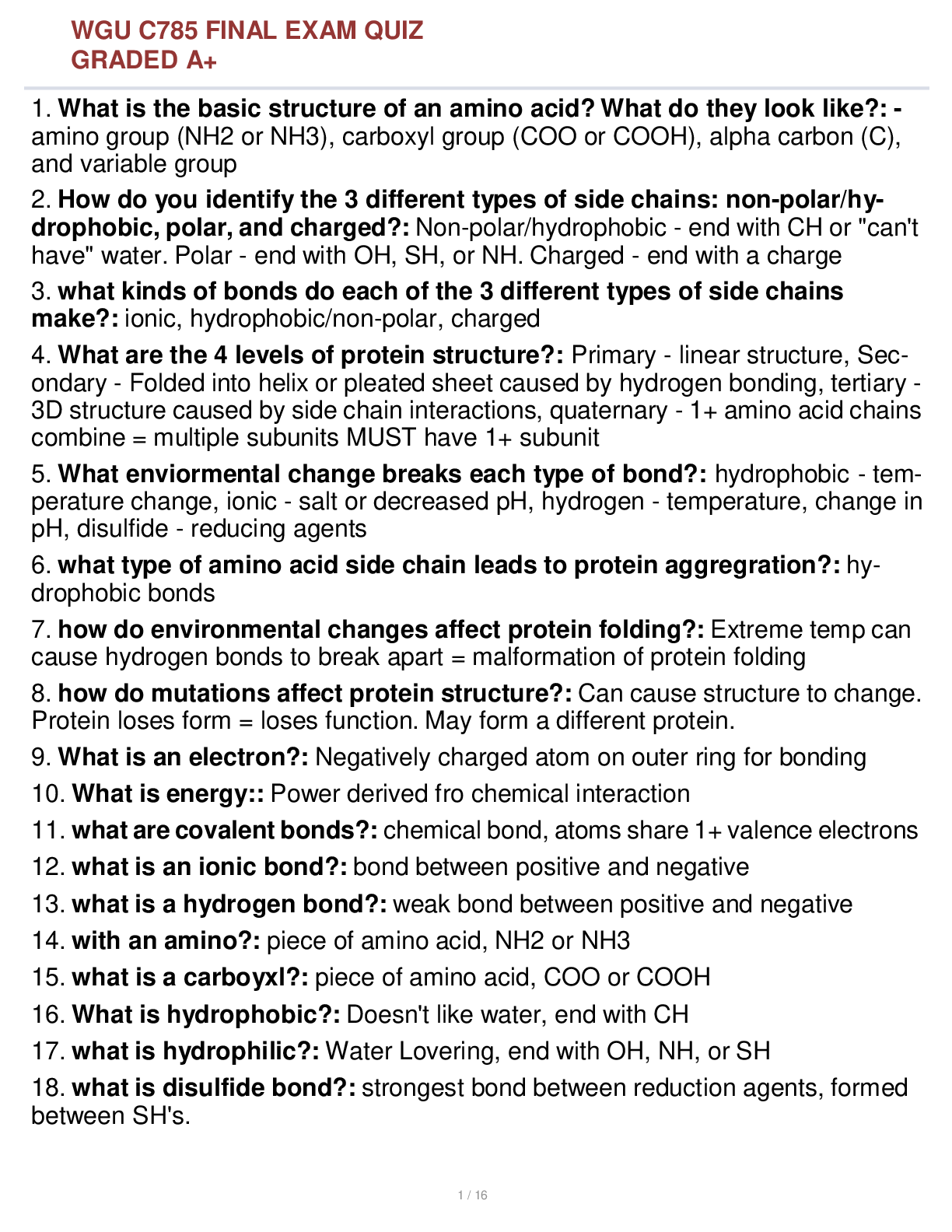
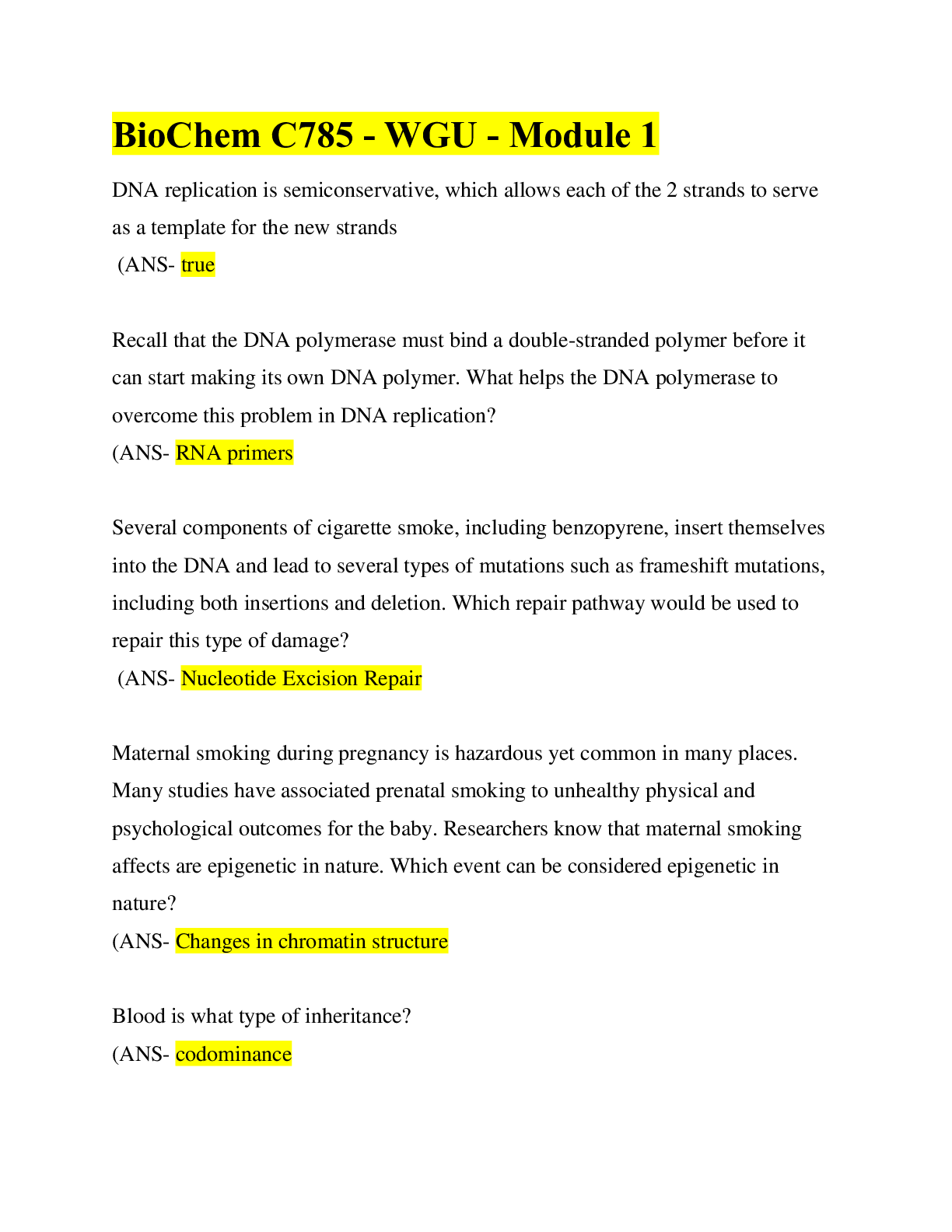
.png)


.png)



